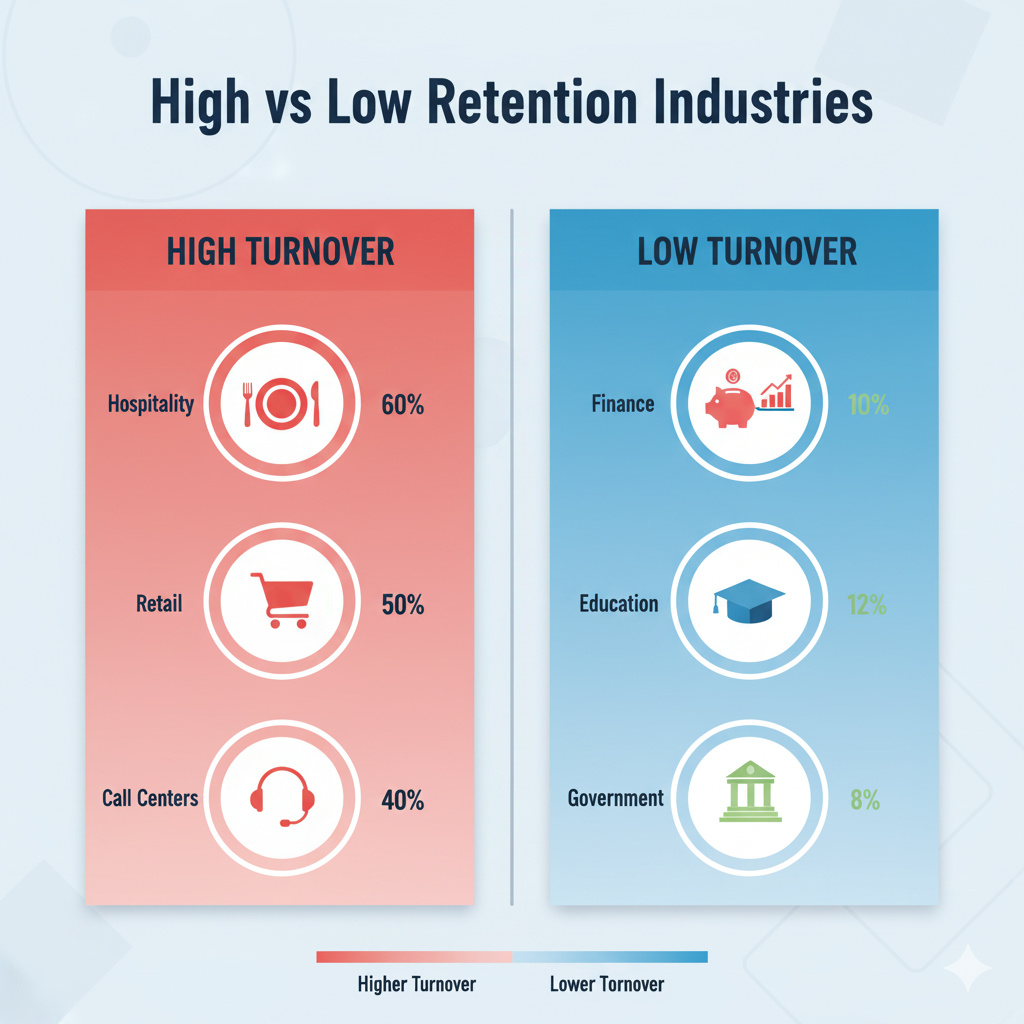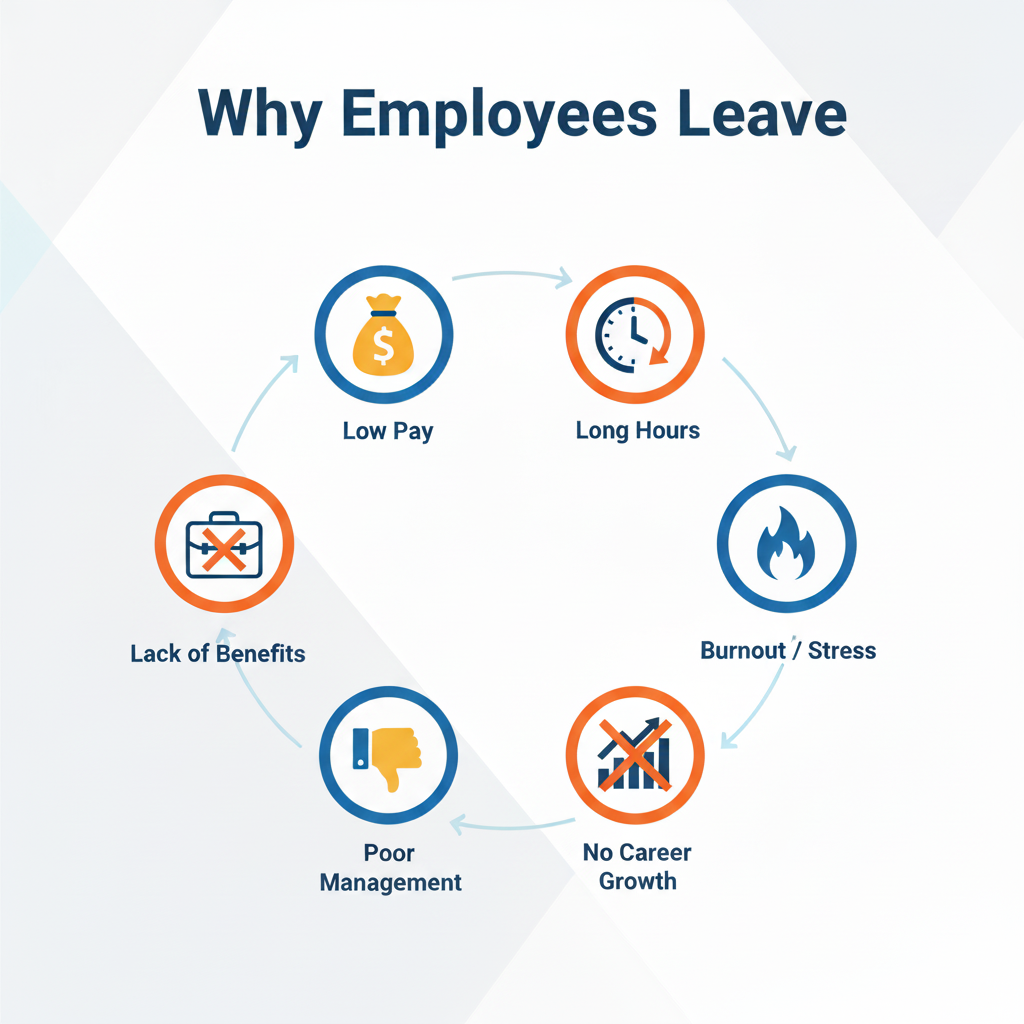Employee turnover is one of the most pressing challenges in the global labor market. According to some studies, turnover rates can exceed 60 percent in industries like hospitality and retail, placing enormous strain on businesses. High turnover not only creates instability for companies but also leads to burnout and stress for employees constantly adapting to shifting teams.
Before diving into which industries face the steepest challenges, it is important to define key terms. Turnover refers to the proportion of employees leaving a company or sector in a given period. Churn rate is a similar term often used interchangeably, while retention rate represents the proportion of employees who stay with an employer over a certain period. Turnover can be voluntary (employee resigns) or involuntary (employer terminates employment).
Understanding turnover is critical for both employers and employees. For employers, high churn drives up recruitment and training costs, erodes institutional knowledge, and harms customer experience. For employees, industries with consistently high churn may signal poor working conditions or limited career growth.
This article examines how turnover is measured, the global and regional industries with the highest churn, the underlying causes, and what organizations can do to improve retention.
Measuring turnover is not always straightforward, as definitions and benchmarks vary across countries and industries.
Benchmarks vary by country. For example:
Turnover rates differ significantly across industries. The following industries consistently rank among the highest globally:


Retail and hospitality are the undisputed leaders in global churn. In US restaurants, annual turnover has topped 70 percent, with frontline staff cycling constantly. Low wages, irregular hours, and physically demanding conditions drive employees away. Similarly, hotels and tourism companies suffer high churn, especially during seasonal peaks.
Call centers are notorious for their high attrition, averaging 30 to 45 percent worldwide. Stress from constant monitoring, long shifts, and dealing with difficult customers contributes to burnout. The rise of AI chatbots has not reduced attrition but instead added new pressure for employees to handle only complex cases.
Nursing and home care roles experience turnover rates of 20 to 30 percent in many countries. Causes include heavy workloads, emotional stress, and relatively low pay in relation to qualifications. The COVID-19 pandemic worsened burnout levels, creating staffing crises in the US, UK, and across Europe.
Truck drivers and warehouse workers face high churn, often above 30 percent. Long hours, low pay, and physically exhausting work are major contributors. In Europe, driver shortages have caused significant supply chain challenges.
Factories, especially those reliant on contract labor, experience frequent turnover. Seasonal industries such as agriculture, textiles, and holiday manufacturing see churn rates rise sharply during peak demand, only to collapse afterward.

Several factors explain why the above sectors struggle with retention:

Companies in high-churn industries can adopt several practices to reduce turnover:
Real-world examples include large retailers offering tuition assistance to retain workers, or hospitals investing in mentorship programs for nurses.
Turnover is a complex issue that affects nearly every industry but hits some sectors harder than others. Hospitality, retail, call centers, healthcare, and logistics consistently face the steepest challenges, with turnover rates far exceeding global averages. The reasons range from low pay and poor conditions to stress, seasonality, and lack of growth opportunities.
For employers, reducing churn requires more than short-term incentives. It involves building better organizational cultures, offering growth pathways, and providing competitive compensation. For employees, awareness of turnover patterns can guide career decisions by highlighting industries that may offer more stability and growth.
By measuring, benchmarking, and addressing retention strategically, companies can not only save on costs but also create healthier workplaces that attract and keep the right talent.